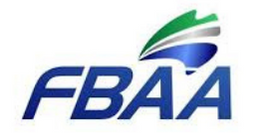For businesses experiencing financial distress, safe harbour provides a critical legal framework to navigate challenges while protecting company directors. Introduced as part of Australia’s corporate insolvency laws, safe harbour offers directors the ability to explore recovery strategies without the immediate risk of personal liability for insolvent trading. At apickle, we help businesses understand and utilise safe harbour protections to stabilise operations and work toward financial recovery.
What Is Safe Harbour?
Safe harbour is a legal provision under Australia’s Corporations Act 2001 (Section 588GA) designed to protect company directors from personal liability for insolvent trading when a company is in financial distress.
Put simply, safe harbour allows directors to develop and implement strategies to save or restructure the business without the fear of being held personally responsible for debts incurred during the recovery process. To qualify for this protection, directors must take reasonable steps to ensure the business’s actions are likely to result in a better outcome for the company and its creditors compared to immediately placing the company into voluntary administration or liquidation.
Safe harbour in Australia encourages proactive decision-making, allowing directors to focus on finding solutions and avoiding insolvency while maintaining legal protection.
How Safe Harbour Can Protect Your Business
For directors and businesses facing financial distress, safe harbour provides a crucial safety net. Here’s how it can protect and benefit your business:
- Protection Against Insolvent Trading Claims: Directors are shielded from personal liability for debts incurred while pursuing a recovery plan, provided they meet the safe harbour criteria.
- Time to Restructure and Recover: Safe harbour offers breathing space to assess the company’s financial position, implement restructuring strategies, and explore viable options to return to profitability.
- Better Outcomes for Creditors: Safe harbour enables directors to act quickly and responsibly, increasing the likelihood of achieving a better financial outcome for creditors than immediate liquidation.
- Preservation of Jobs and Value: Unlike liquidation, safe harbour allows the company to continue trading, retaining employees, clients, and overall business value.
By leveraging a safe harbour provision, businesses can take strategic actions to recover while mitigating the risks associated with insolvent trading.
Navigating Safe Harbour: Step-by-Step
Qualifying for safe harbour protection involves a structured process to ensure compliance with legal requirements. Here’s a step-by-step guide:
Identify Financial Distress
Directors must recognise that the company is experiencing financial challenges that could lead to insolvency.
Engage Expert Advisors
Engage qualified financial advisors, accountants, or restructuring specialists like apickle to assess the company’s position and develop a recovery strategy.
Create a Recovery Plan
Develop a clear and well-documented plan outlining the steps to achieve a better outcome for the company and its creditors compared to immediate insolvency.
Maintain Proper Records
Directors must maintain accurate and up-to-date financial records, as these will be essential for proving compliance with safe harbour requirements.
Implement the Strategy
Execute the recovery plan while monitoring its progress and adjusting it as necessary. Directors must demonstrate they are taking reasonable steps to ensure the plan’s success.
Monitor and Reassess
Safe harbour protection remains valid as long as directors continue taking active, reasonable steps to pursue the recovery strategy. If the strategy becomes unviable, alternative solutions (e.g., voluntary administration) must be considered.
By following these steps, directors can navigate safe harbour in Australia with confidence, ensuring compliance and protection under the law.
Eligibility for Safe Harbour Protection
To qualify for safe harbour protection, directors and their company must meet specific eligibility criteria, including:
Compliance with Legal Obligations:
- The company must have met its employee entitlement obligations, such as paying wages and superannuation contributions.
- The company must be up-to-date with its tax reporting and payment obligations (or taking active steps to address any issues).
Reasonable Steps:
- Directors must take reasonable steps to develop a plan that is likely to lead to a better outcome than placing the company into liquidation or voluntary administration. This includes seeking advice from qualified professionals.
Accurate Financial Records:
- Directors must maintain detailed and current financial records to prove they are acting in good faith and managing the business responsibly.
Engagement of Expert Advisors:
- Obtaining advice from insolvency, legal, or financial experts is crucial to demonstrate that the recovery strategy is credible and well-informed.
By meeting these eligibility requirements, directors can access safe harbour protection, ensuring their actions remain legally compliant while pursuing business recovery.
Partner with Us to Navigate Safe Harbour
At apickle, we understand the complexities of financial distress and the critical importance of leveraging safe harbour protections effectively. Our team of experts will work with you to assess your financial challenges, develop a tailored recovery plan, and ensure compliance with legal obligations to protect directors from personal liability.
If you want to learn more about managing financial challenges, explore our helpful resources:
- What is Financial Distress?
- Tips to Avoid Business Bankruptcy
- What is Tax Liability?
- Financial Distress Solutions
At APICKLE, we’re here to help small and medium-sized enterprises survive and thrive, even in the toughest of times.
Our innovative digital broker platform simplifies debt refinancing, improving LVRs and consolidating bad debts into manageable solutions. Through our Commercial Debt Refinancing Home Loan and expert negotiation services, we empower businesses to regain control of their finances and embrace new opportunities.
With an average monthly savings of $13,500 for SMEs, APICKLE is more than a service—it’s a lifeline.
APICKLE: Debt Refinancing Experts. Transforming challenges into opportunities and making a big DILL for small businesses everywhere.
Frequently Asked Questions
What is safe harbour, and how does it apply to Australian businesses?
Safe harbour is a legal provision under the Corporations Act that protects company directors from personal liability for insolvent trading while they develop and implement a recovery plan. It applies to businesses in Australia facing financial distress and seeking better outcomes than immediate liquidation.
How do directors qualify for safe harbour protection?
To qualify, directors must take reasonable steps to develop a recovery strategy, engage expert advisors, and ensure the company complies with legal obligations, such as paying employee entitlements and maintaining accurate financial records.
Can a company continue trading under safe harbour?
Yes, safe harbour allows the company to continue trading while directors implement a recovery plan. This helps maintain operations, jobs, and business value during the restructuring process.
How long does safe harbour protection last?
Safe harbour protection lasts as long as directors are actively taking reasonable steps to implement and monitor the recovery plan. If the plan is no longer viable, directors must reassess and consider alternative solutions, such as voluntary administration.
Why is documentation important for safe harbour?
Accurate documentation is critical for proving compliance with safe harbour requirements. Directors must maintain detailed records of financial performance, advice received, and actions taken to demonstrate they acted responsibly and in good faith.



